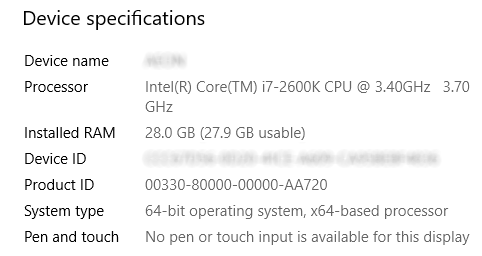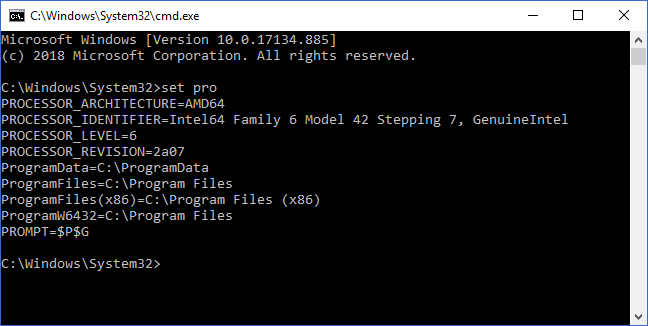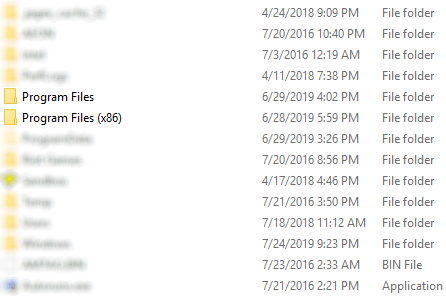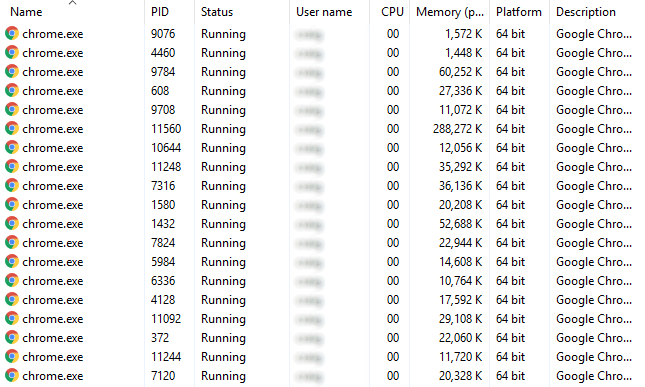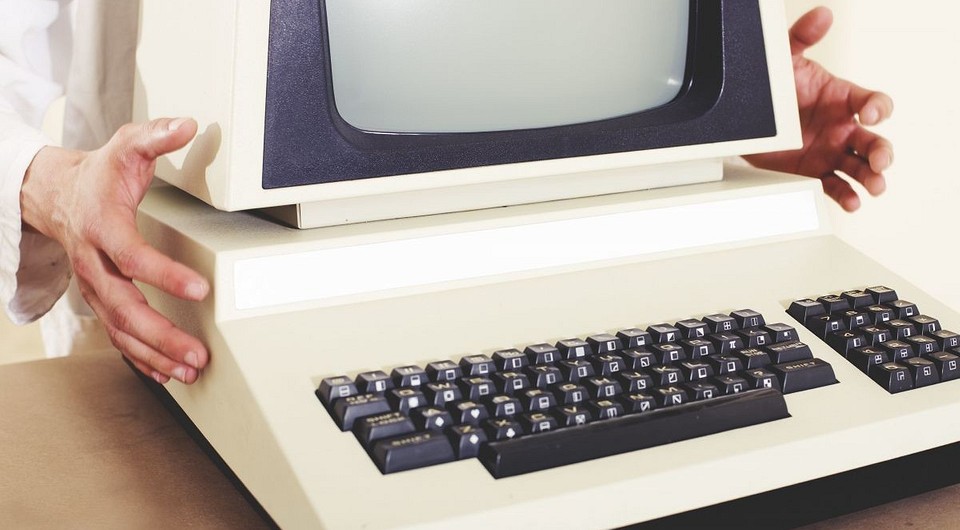The program is only for 32 bit windows
How to determine an application is 64-Bit or 32-Bit on Windows 10?
If you have bought a PC in recent years, in all probabilities you have a 64-bit version of Windows 10. Unlike 32-bit (x86) Windows installation that permitted the installation of only 32-bit programs, a 64-bit (x64) Windows 10 installation allows installing programs of both 32-bit and 64-bit architecture. Now, for enhancing your Windows 10 experience for superior performance, users might want to determine if an installed program is a 32-bit or 64-bit type. Fortunately, figuring out if an installed application is 32-bit or 64-bit is easy.
The difference between 32-bit and 64-bit architecture
Windows currently come in two architectures, 32-bit and 64-bit. The major difference between the two is the amount of memory supported by them and the performance. 32-bit Windows and programs support the use of 3GB RAM, on the other hand, 64-bit Windows and programs support more than 4 GB of RAM and offer additional security benefits. Because of this, a 64-bit application on 64-bit Windows might run a little faster. Also, 64-bit Windows and programs are typically larger in size than 32-bit. Visit this post to know more about the difference between 32-bit and 64-bit Windows.
Upgrading 32-bit apps to 64-bit
Natively, a user cannot upgrade a 32-bit Windows installation to 64-bit. Similar is the case for applications, hence you will have to uninstall the 32-bit application and then install the 64-bit one, if available.
32-bit or 64-bit application – How to tell?
Let’s look at these methods in detail.
1) Check if an application is 32-bit or 64-bit Using Task Manager
1] Open the ‘Start’ menu and search for ‘Task Manager’. Then click the top result to open the app. Or try the fastest way to get there by using this keyboard shortcut – ‘Ctrl + Shift + Esc’.
2] Click the ‘Details’ tab.
3] Now right-click a column header and choose the ‘Select Columns’ option.
4] In the ‘Select Columns’ window check the ‘Platform’ option and hit the ‘OK’ button.
5] This action adds the platform column in the Task Manager, so you can confirm the 64-bit and 32-bit apps running on your computer. For each running application or process, this column tells you whether it is 32-bit or 64-bit.
Once the above steps are completed, you will understand the architecture of the applications running on your system.
2) Check if an application is 64-bit or 32-bit, by analyzing its Properties
Another method that works great to check the architecture of an application is analyzing the properties of that program’s executable file. Follow these steps:
1] Locate the launcher file (*.exe) or one of its shortcuts.
2] Now right-click on it and select ‘Properties’
3] Go to the ‘Compatibility’ tab.
4] Now, check the “Run this program in compatibility mode for” box, and open the drop-down list. Note, if this drop-down list starts with Windows Vista, then the application you selected is a 64-bit application. If the list starts with Windows 95, then the application you selected is a 32-bit application.
In this example, the list starts with Windows 95, so it is not a 64-bit application but a 32-bit one.
NOTE: Don’t apply the compatibility setting and close the ‘Properties’ window without making any changes.
3) Check if an application is 64-bit or 32-bit using File Explorer
You can follow these steps:
1] Go to the ‘File Explorer’
2] From the left navigation pane, click on ‘This PC’
3] Under the ‘Devices and drivers’ section, double-click the ‘Windows (C:)’ drive where Windows 10 is installed.
4] Confirm the 64-bit applications opening the Programs Files folder and the 32-bit applications opening the Programs Files (x86) folder.
Normally, when an application or a program is installed on a Windows 10 system, it is in one of the following folders on C drive: Program Files or Program Files (x86).
64-bit applications are usually installed in the “C:\Program Files” folder, while 32-bit applications install themselves in the “C:\Program Files (x86)” folder.
But there are some exceptions to this rule. For instance, the 64-bit version of Google Chrome installs itself in the “C:\Program Files (x86)” folder. We could not find the reason for this exception, there are chances that you may encounter other 64-bit applications that do the same.
4) Check the About or Help menu
Few applications also state if they are 32-bit or 64-bit in their ‘About or Help’ menu. Google Chrome, for example, you can go to its ‘Settings Menu’ and click on ‘Help’ and then go to ‘About Google Chrome’. This opens a new tab that has the details of its version number and application architecture.
But this is not a very reliable solution as it is not a standard method from software developers to include this information in their applications. Also, currently, very few applications offer the app architecture into their About and Help info.
So, these are a few of the simplest methods that can be used to check if an application is 64-bit or 32-bit, without using any third-party tools. Do try them out and let us know which one worked for you. And, if you have other tricks, do not hesitate to share it with us in the comments section below.
4 Ways To Tell If You’re Using 32-Bit Or 64-Bit Windows
Important when it comes to installing software
Although we’re gradually transitioning into a fully 64-bit PC world, not everyone is currently running a 64-bit version of Windows. Knowing if your Windows is 32-bit or 64-bit is important when it comes to installing some software, especially drivers.
Finding out if you’re running 32-bit or 64-bit Windows isn’t difficult, though, and there are multiple ways for you to do so. In this article, let’s look at four of the most simple and easy ways to determine which version of Windows is running on your PC.
System Information
My pick for the simplest and most straightforward way to determine if you’re using 32-bit or 64-bit Windows lies within Windows’ system information.
To locate this, press the Windows + X keys, then click on System. A new About window will pop up, first showing your PC’s protection status.
Halfway down this page, you’ll find the Device Specifications heading.
Here, the information listed as your System Type will plainly state which version of Windows you’re running.
Command Prompt
Another simple way to figure out the architecture of your processor and if you’re running 32-bit or 64-bit Windows is by using the Command Prompt.
Type cmd into the search bar of your Windows Start Menu. The best match should be Command Prompt. Rather than opening it like you would normally, right-click on the search result and select Run as Administrator.
When the Command Prompt terminal has opened, type in the set pro command. After hitting the Enter key, the prompt will return a list of information about your machine’s processor and operating system.
Here, there are three ways to determine which version of Windows you’re running:
The processor-specific flags should indicate whether you’re using a 32-bit or 64-bit processor.
Unless you’ve changed your PC’s hardware, the presence of the ProgramFiles(x86) flag should tell which version of Windows you’re running. This will only appear if you’re on a 64-bit version of Windows.
Program Files
This simple trick is a spinoff of the Command Prompt method. Again, if your machine has never gone through a hardware change since installing Windows, the presence of multiple Program Files folders tells you everything that you need to know.
First, navigate to your C: drive in Windows Explorer.
If you’re running a 32-bit version of Windows, you should only see the Program Files folder (and all programs inside of it will be 32-bit).
However, for 64-bit versions of Windows, the Program Files folder will contain 64-bit applications, while the Program Files (x86) folder will contain all 32-bit applications.
The 64-bit versions of Windows have backward compatibility with 32-bit applications, but the 32-bit versions of Windows cannot run 64-bit applications. This is why the folders are structured this way.
If you’d like to know more, check out Help Desk Geek’s article explaining why 64-bit Windows needs two Program Files folders.
Task Manager
While this method takes a bit more effort than the others, it also provides information specific to the applications you’re currently running.
There will now be a Platform column that displays the software architecture of each of your running processes.
It should quickly be easy to figure out which version of Windows you’re running based on this: 32-bit will have no 64-bit applications shown, while 64-bit versions of Windows are apparent if even a single application is 64-bit.
As the number of newly released systems running a 32-bit architecture continue to plummet, the confusion between 32-bit and 64-bit versions of Windows will become less of a problem. Until then, though, it’s better to be safe than sorry!
Craig is a long-time writer, coder, and marketer with years of experience in the technology and gaming spaces. Since 2008, he’s worked remotely with some of the most notable publications in these industries, specializing in Windows, PC hardware and software, automation, and the like. Read Craig’s Full Bio
5 ways to tell whether a Windows program is 64-bit or 32-bit
Most of the Windows installations today are 64-bit, so most people use 64-bit operating systems and applications. Even popular applications like Chrome, Firefox, Office, and 7-Zip, are using the 64-bit architecture to provide better performance. All this is good but, on a 64-bit operating system, you can run both 32-bit and 64-bit apps. How can you tell whether a program is 64-bit or 32-bit? To help you figure this out, we would like to share five ways of doing this, that work in all modern versions of Windows:
NOTE: This guide covers Windows 10, Windows 7, and Windows 8.1. Most of the methods work in all three versions of Windows, but one of them is tailored only to Windows 7 – we marked it accordingly.
How to tell if your Windows installation is 64-bit or 32-bit?
It is essential to know that, if you are using a 32-bit version of Windows, all the applications that are installed on it, are also 32-bit. You cannot install and use 64-bit applications on 32-bit operating systems.
However, if you are using a 64-bit version of Windows, you can use both 32-bit and 64-bit applications. Let’s see a few methods for how to figure out which programs are 32-bit and which are 64-bit.
1. How to tell if a program is 64-bit or 32-bit, using the Task Manager (Windows 10 and Windows 8.1)
First, you need to open the Task Manager by any method you want. The fastest way to get there is to use this keyboard shortcut: Ctrl + Shift + Esc.
Then go to the Details tab.
Right-click or press and hold any column header and choose “Select columns.”
Find and check the Platform box. Then, click or tap OK.
Run the application you are interested in and look at the Platform column in the Task Manager. For each running application or process, this column tells you whether it is 32-bit or 64-bit.
2. How to tell if a program is 64-bit or 32-bit, using the Task Manager (Windows 7)
In Windows 7, the process is slightly different than in Windows 10 and Windows 8.1. Open the Task Manager by simultaneously pressing the Ctrl + Shift + Esc keys on your keyboard. Then, click on the Processes tab.
In the Processes tab, you see the list of processes that are running at the moment. If a program is 32-bit, near its name you should see the text: *32. If a program is 64-bit, you only see its name, without *32 at the end. In the screenshot below, only one program is 32-bit, and it is highlighted.
3. How to tell if a program is 64-bit or 32-bit, by analyzing its properties (all Windows versions)
Another method that works well is to analyze the properties of that program’s executable file. First, you have to locate the launcher file (*.exe) or one of its shortcuts.
Right-click on it or press and hold and then select Properties.
Then go to the Compatibility tab.
Here, check the “Run this program in compatibility mode for” box, and open the drop-down list. If the list starts with Windows Vista, then the application you selected is a 64-bit application.
If the list starts with Windows 95, then the application you selected is a 32-bit application.
IMPORTANT: Do not apply any compatibility settings and close the Properties window without making any changes.
4. How to tell if a program is 64-bit or 32-bit, using the File Explorer or Windows Explorer (all Windows versions)
Usually, when you are installing a program or an application, it is located in one of the following folders: “C:Program Files” or “C:Program Files (x86)”. 64-bit applications are usually installed in the “C:Program Files” folder, while 32-bit applications install themselves in the “C:Program Files (x86)” folder.
However, there are some exceptions to this rule. For example, the 64-bit version of Google Chrome installs itself in the “C:Program Files (x86)” folder. We do not know the reason for it, but you might encounter other 64-bit applications that do the same.
5. How to tell if a program is 64-bit or 32-bit, by looking at its About or Help menu (only for some programs, in all Windows versions)
This approach is also used by other apps and you can use it on any Windows version. However, as we said, it is not a reliable method as it is not a standard approach from software developers to include this information in their applications.
Do you know other means for telling whether a program is 64-bit or 32-bit?
These are the most straightforward methods you can use to figure out whether an application is 64-bit or 32-bit, without installing third-party tools. Try them out and let us know which is your favorite. Also, if you know other methods, do not hesitate to share them in the comments section below.
Find out if a Windows program is 32-bit or 64-bit
If you have bought a computer in recent years, chance is you run a 64-bit version of Windows on it. While Microsoft is still producing 32-bit copies of Windows 10, those are sold and deployed considerably less than 64-bit copies.
Microsoft itself has not released statistics about the distribution of 32-bit and 64-bit Windows systems. If you look at Steam’s Hardware Survey, as flawed as it is, you will notice that 64-bit dominates the chart.
That is somewhat to be expected considering that games benefit from a lot of memory. Still, Windows 10 64-bit dominates Steam with 48.37% currently opposed to 32-bit Windows 10 with only 1.23%. The differences are less drastically for Windows 7 (28.82% to 5.40%) and Windows 8.1 (8.59% to 1.19%).
Things are different on the software side. Plenty of high profile applications are either only available as 32-bit versions, or prioritize the 32-bit version over the 64-bit version. This has been the case for the Firefox web browser for instance. Mozilla pushed the 32-bit version of Firefox on Windows, and is just starting to change that.
Differences between 64-bit and 32-bit programs
We talked about the differences of 32-bit and 64-bit versions of Windows back when Windows 7 was released. These are still true. While there are plenty of differences, the most important ones are that 64-bit Windows and programs may use more RAM, that 64-bit Windows offers additional security benefits, and that 64-bit Windows and programs are usually larger.
Find out if a Windows program is 32-bit or 64-bit
There are several ways to determine whether a Windows process is 32-bit or 64-bit. One of the best ways is to make use of the Windows Task Manager for that.
All versions of Windows highlight 32-bit processes right away in the Task Manager. Any 32-bit program has a *32 listed after its image name so that you knew directly that it was a 32-bit process.
You can improve that by adding a dedicated platform column to the task manager that reveals right away if a process is 32-bit or 64-bit.
Step 1: First thing you may need to do is click on «more details», as the Task Manager that Windows 10 opens is not usable at all.
Step 2: The processes tab is of no use as well when it comes to determine whether a process is 32-bit or 64-bit. The important *32 addition is missing on that page.
Step 3: Switch to the Details tab. While that offers better information, it still lacks the vital information.
Step 4: Right-click on the title row of the tab and select «select columns».
Step 5: Locate and check «platform» when the new selection window opens.
Platform indicates directly whether a process is 64-bit or 32-bit.
Other means
Other means of determining whether a program is 32-bit or 64-bit are not as reliable. While you could look at the installation directory, Program Files (x86) or Program Files, it is not a 100% indicator as programs are not required to install in the right directory.
Also, this does not include any portable program you may be running, or programs that install in other directories by default.
Another indicator that seems to be reliable is to look at a processes compatibility information. Right-click on an executable file on the system or a process in the Task Manager, and select Properties from the context menu.
Third-party programs like Process Explorer may also be used to reveal whether a process is 32-bit or 64-bit.
This works similarly to how it is done in the Task Manager. Right-click on the title row in Process Explorer, select «select columns», and then select «Image Type(64 vs 32-bit) under «Process Image».
Now You: do you care if a program is 64-bit or 32-bit on your system?
Как на 64-битной Windows запустить программы в режиме совместимости
Если в новой 64-битной Windows старая 32-битная программа не запускается или работает неправильно, вы можете запустить ее в режиме совместимости. CHIP расскажет, как это сделать.
Современные компьютеры в большинстве случаев поставляются с установленной операционной системой Windows 10 64 bit. Даже бюджетные модели уже имеют 3 и более Гбайт оперативной памяти, что позволяет задействовать системе всю мощь 64-битной разрядности обработки данных.
Подробнее о преимуществах 64 bit над 32 bit Windows вы можете прочитать в нашей статье «Преимущества перехода на 64 бита».
Но, как бы не была привлекательна 64-разрядная система, зачастую пользователь просто не имеет в своем распоряжении 64-битной программы, с которой он давно работает и которая его полностью устраивает, т.к. производитель ее просто не выпустил. Как правило, такие программы устанавливаются в Windows в отдельную папку \Program Files (x86) и их запуск осуществляется в 32-разрядном режиме.
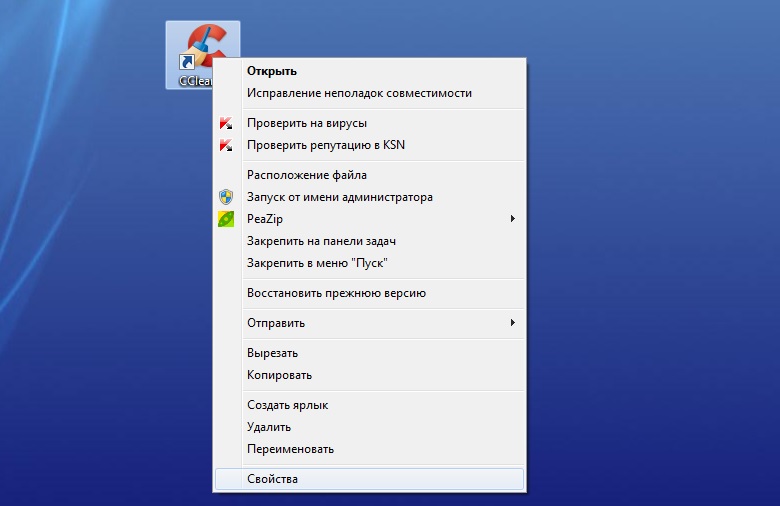
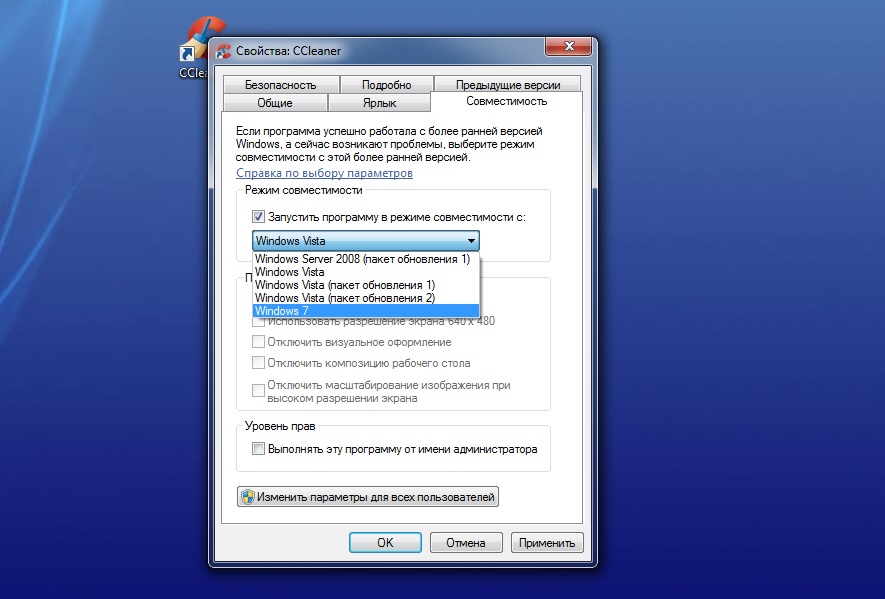
Нажмите кнопку «OK». После этого попробуйте запустить вашу программу.
Кроме того, в контекстном меню Проводника также имеет смысл попытаться автоматически решить задачу, кликнув по строке «Исправление неполадок совместимости» — в Windows 7.
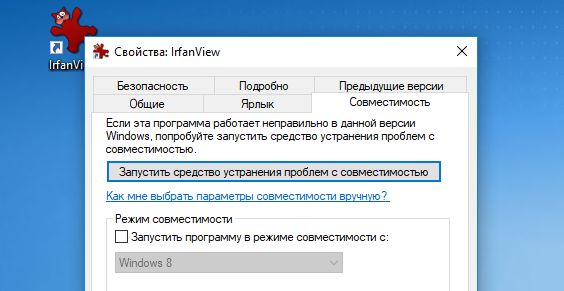
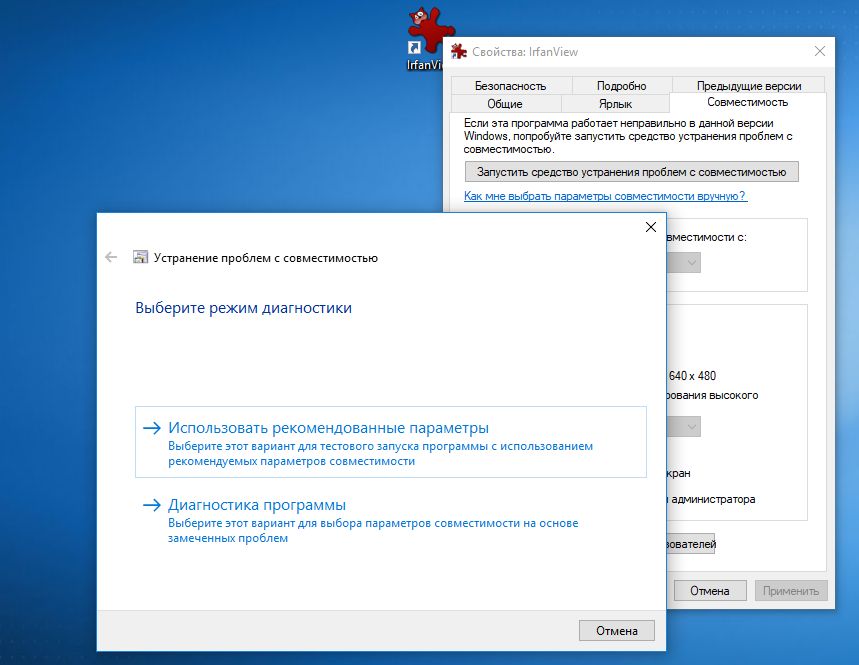
Более радикальным методом запуска программы является ее установка и использование в виртуальной машине с установленной Windows 7 32 bit. Подробнее, как установить и настроить виртуальную машину вы можете почитать в нашей статье «Как создать и настроить на ПК виртуальную ОС?».

